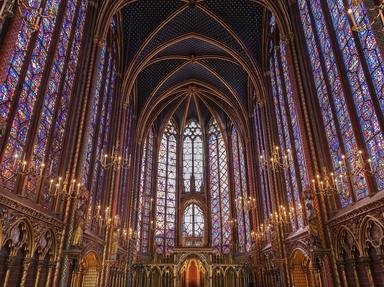Quiz Answer Key and Fun Facts
1. Saint Genevieve, venerated on January 3rd, is one of the patron saints of a European capital city. Which city claims protection by Saint Genevieve?
2. January 5th is the name day of Simeon the Stylite. Why did Simeon earn the epithet "the Stylite"?
3. January 6th is the feast day of one of the early missionaries to England. After which ecclesiastical city in England was a certain Saint Peter (not the apostle) named?
4. January 7th is the day on which lawyers venerate their patron saint. Who is this Spaniard?
5. Marguerite Bourgeoys, a French Roman Catholic missionary in 1653, is celebrated January 12th. Where did she found several schools?
6. January 17th is the name day of Saint Anthony the Abbot, whose temptation by the devil inspired many painters. Is this Saint Anthony the Abbot also the saint who helps look for lost items?
7. January 20th is the feast day of Pope Fabian. Which ecclesiastical function had he fulfilled before becoming Pope in 236?
8. January 21st is the name day of Saint Agnes of Rome. Which animal is usually depicted in her arms or at her feet?
9. January 27th is the name day of Angela Merici. Which religious order did she found?
10. January 31st is the name day of Giovanni Bosco, born in the then independent region of Piedmont in 1815. To which country does this region belong since the end of the Nineteenth Century? Please answer in English, not in the local language.
Source: Author
JanIQ
This quiz was reviewed by FunTrivia editor
CellarDoor before going online.
Any errors found in FunTrivia content are routinely corrected through our feedback system.

